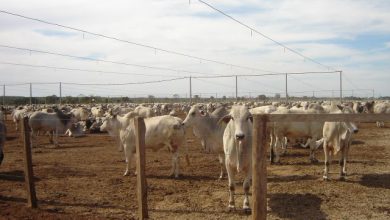- This topic is empty.
- AuthorPosts
- March 29, 2025 at 6:29 am #612934

Semi-intensive livestock production, positioned between extensive and intensive systems, offers a unique set of trade-offs for farmers and the environment.
Understanding the advantages and disadvantages of semi-intensive livestock production is crucial for evaluating its suitability in different contexts and for making informed decisions about livestock management.
This approach aims to capitalize on the benefits of both natural grazing and controlled inputs, but it also presents its own set of challenges. Let’s explore the potential upsides and downsides of adopting this intermediate production system.
1. Potential For Higher Productivity Compared To Extensive Systems
One of the key advantages of semi-intensive production is its potential to achieve higher levels of productivity compared to extensive grazing systems. By supplementing natural forage with controlled feeding, farmers can ensure animals receive adequate nutrition for faster growth rates, increased milk or egg production, or improved meat yields.
This increased output per animal and per unit of land can lead to greater profitability and efficiency in resource utilization compared to relying solely on natural pasture.
2. Lower Input Costs Compared To Intensive Systems
Compared to intensive, confinement-based systems, semi-intensive production often benefits from lower input costs. The reliance on natural grazing reduces the need for large quantities of purchased feed, which can be a significant expense in intensive operations.
Additionally, the lower levels of technological intervention and infrastructure requirements can translate to reduced capital investment and operational expenses. This cost-effectiveness can make semi-intensive systems more accessible and sustainable for some farmers.
3. Improved Animal Welfare Compared To Intensive Systems
Semi-intensive systems typically offer improved animal welfare compared to intensive systems. Providing animals with access to pasture allows for more natural behaviors, such as grazing, roaming, and social interaction. This can reduce stress and improve the overall well-being of the livestock.
The increased space and more natural environment can lead to fewer health problems associated with confinement, such as lameness and behavioral issues, contributing to a more ethical and sustainable approach to animal husbandry.
4. Higher Land Requirements Than Intensive Systems
A significant disadvantage of semi-intensive production is that it generally requires more land compared to intensive systems. While land use is less extensive than in purely grazing systems, it still necessitates a considerable area for pasture.
This can be a limiting factor in regions where land is scarce or expensive. The need for larger tracts of land can also present challenges in terms of management, fencing, and water access for the animals.
5. Potential For Environmental Impact
Despite often being considered more environmentally friendly than intensive systems, semi-intensive production can still have a potential environmental impact. Grazing, if not m
anaged properly, can lead to pasture degradation, soil erosion, and water pollution from animal waste. The use of supplementary feed can also contribute to the environmental footprint of the production system, depending on the sourcing and production methods of the feed. Careful management practices are crucial to mitigate these potential negative effects.
In conclusion, the advantages and disadvantages of semi-intensive livestock production highlight a system that offers a compelling middle ground but requires careful consideration and management.
While it presents benefits such as increased productivity, lower input costs, and improved animal welfare compared to more intensive methods, it also comes with drawbacks like higher land requirements and the potential for environmental impact.
Ultimately, the suitability of a semi-intensive system depends on a variety of factors, including local environmental conditions, economic considerations, and the specific goals of the livestock operation. Weighing these advantages and disadvantages is essential for making informed decisions about sustainable and effective livestock farming.
Read Also: Sustainable Livestock Waste Management Practices in Peri-Urban Lagos
- AuthorPosts
- You must be logged in to reply to this topic.

